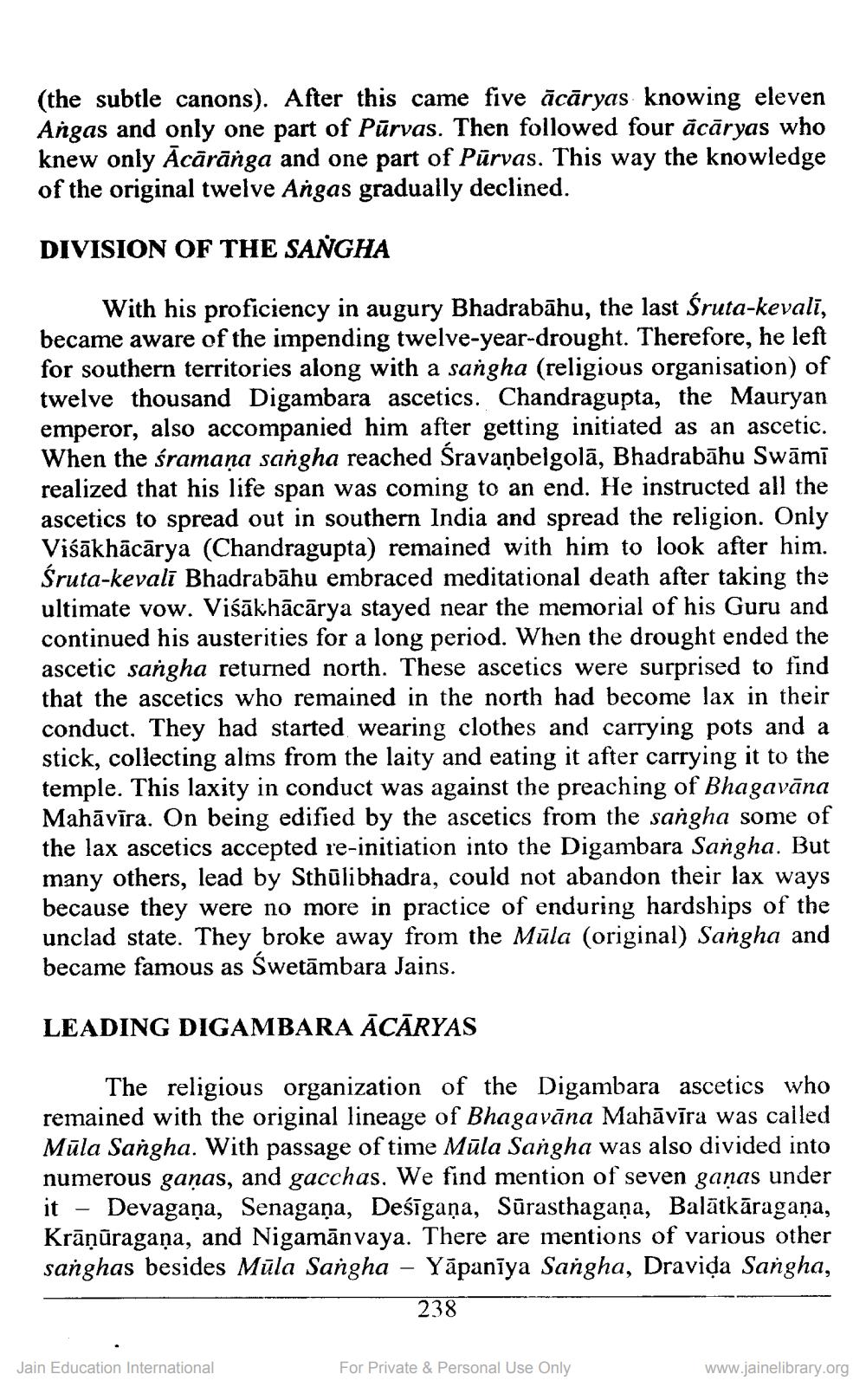________________
(the subtle canons). After this came five ācāryas knowing eleven Angas and only one part of Pūrvas. Then followed four ācāryas who knew only Ācārānga and one part of Pūrvas. This way the knowledge of the original twelve Angas gradually declined.
DIVISION OF THE SANGHA
With his proficiency in augury Bhadrabāhu, the last Śruta-kevali, became aware of the impending twelve-year-drought. Therefore, he left for southern territories along with a sangha (religious organisation) of twelve thousand Digambara ascetics. Chandragupta, the Mauryan emperor, also accompanied him after getting initiated as an ascetic. When the śramaņa sangha reached Śravaņbelgolā, Bhadrabāhu Swāmī realized that his life span was coming to an end. He instructed all the ascetics to spread out in southern India and spread the religion. Only Viśākhācārya (Chandragupta) remained with him to look after him. Śruta-kevali Bhadrabāhu embraced meditational death after taking the ultimate vow. Viśākhācārya stayed near the memorial of his Guru and continued his austerities for a long period. When the drought ended the ascetic sangha returned north. These ascetics were surprised to find that the ascetics who remained in the north had become lax in their conduct. They had started wearing clothes and carrying pots and a stick, collecting alms from the laity and eating it after carrying it to the temple. This laxity in conduct was against the preaching of Bhagavāna Mahāvīra. On being edified by the ascetics from the sangha some of the lax ascetics accepted re-initiation into the Digambara Sangha. But many others, lead by Sthūlibhadra, could not abandon their lax ways because they were no more in practice of enduring hardships of the unclad state. They broke away from the Müla (original) Sangha and became famous as Śwetāmbara Jains.
LEADING DIGAMBARA ĀCĀRYAS
The religious organization of the Digambara ascetics who remained with the original lineage of Bhagavāna Mahāvīra was called Mūla Sangha. With passage of time Mūla Sangha was also divided into numerous gañas, and gacchas. We find mention of seven gaņas under it - Devagaña, Senagana, Deśīgaña, Sūrasthagana, Balātkāragana, Krāņūragaņa, and Nigamānvaya. There are mentions of various other sanghas besides Mūla Sangha - Yāpanīya Sangha, Dravida Sangha,
238
Jain Education International
For Private & Personal Use Only
www.jainelibrary.org




